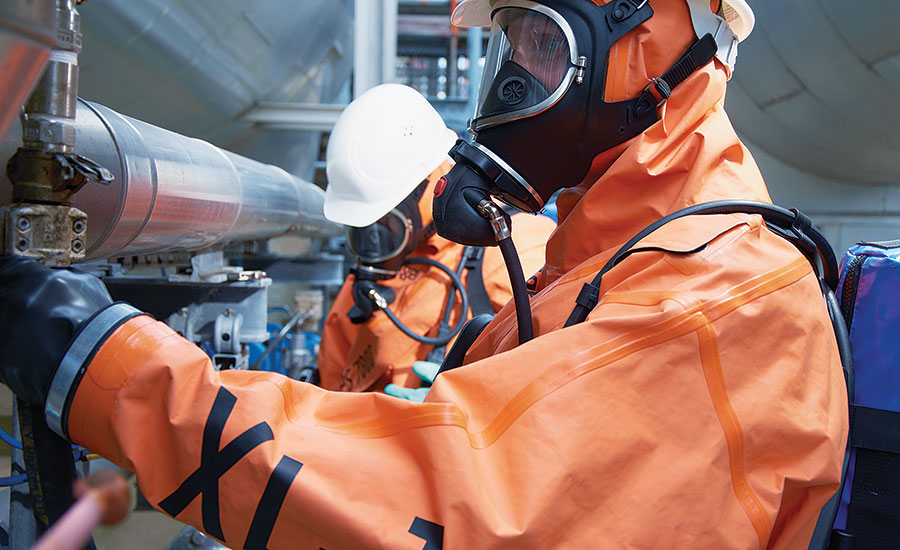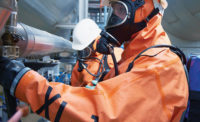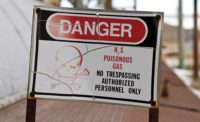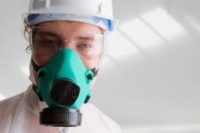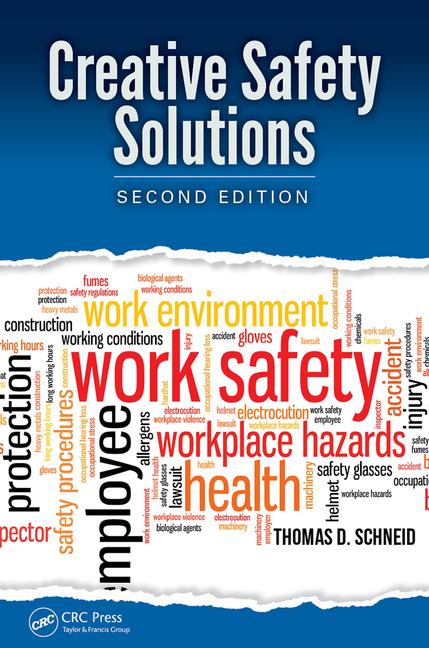Workers operating in high-risk industries, such as oil and natural gas and chemical, encounter environments rich with hazardous gases that may be unseen or unfamiliar, such as hydrogen sulfide (H2S).
Most commonly, H2S is found naturally around crude petroleum and natural gas deposits or stagnant bodies of water; however, it can also be manmade. It's extremely important that industrial workers understand the dangers of this toxic gas, as it can be detrimental to one’s health. As one of the leading causes of fatal occupational injuries in the workplace—64 occupational injuries as a result of H2S exposure between 2003 and 20121— it is imperative that companies and their employees commit to ongoing training and safe worksite practices that curtail hydrogen sulfide’s severe, and sometimes lethal, impact.
Understand your risk
The first step to selecting the optimal respirator for a worksite is identifying all areas of potential exposure. Heavy and explosive, H2S is a colorless gas that travels along the ground — enhancing its ability to go undetected.
To safeguard against this life-threatening gas, companies should consider hiring an industrial hygienist to conduct the risk assessment of where the potential for danger exists. These professionals must be certified and meet all licensing requirements in the industry where the assessment is taking place. Additionally, upon the completion of the initial worksite visit from the industrial hygienist, company leadership should administer new risk assessments after regulatory changes and the introduction of new equipment.
In tandem with each assessment, regulatory checklists should be reviewed, such as the following NIOSH Respirator Selection Logic2:
- General use conditions, including determination of contaminant(s);
- Physical, chemical, and toxicological properties of the contaminant(s);
- NIOSH recommended exposure limit (REL), OSHA permissible exposure limit (PEL), American Conference of Governmental Industrial Hygienists (ACGIH) threshold Limit Value (TLV), or other applicable occupational exposure limit;
- Expected concentration of each respiratory hazard;
- Immediately dangerous to life or health (IDLH) concentration;
- Oxygen concentration or expected oxygen concentration;
- Eye irritation potential; and
- Environmental factors, such as presence of oil aerosols.
Furthermore, understanding H2S’ dangerous behavior and its corresponding health effects are essential in respirator assessment. Analyzing the gas concentration, shown in parts per million (ppm), and duration of exposure, helps in determining the impact on workers’ health.
Described below are various concentrations of H2S and the corresponding health issues due to exposure:
- .13 ppm: Threshold of odor detection.
- 10-100 ppm: Eye and throat irritation and headaches can occur after one hour of exposure. Continued exposure and a worker may experience nausea, dizziness, coughing and vomiting.
- 700-1000 ppm: Unconsciousness and immediate collapse within one or two breaths. Fatality is possible at this level if not removed from exposure.
- 1000-2000 ppm: Nearly instant death occurs.
- 45,000 and 450,000 ppm: Concentrations at this level can trigger an explosion.
Ensuring maximum safety with appropriate PPE
Recognizing the potential for varying exposure levels is vital. Respiratory selection should factor in a worksite’s corresponding standards and guidelines. A worksite based in the U.S. will be required to adhere to OSHA regulations, which means respirator selection is based on the maximum use concentration (MUC). This figure is calculated after multiplying the recommended exposure limit (REL) by the assigned protection factor (APF). OSHA’s standard 29 CFR 1910.134 outlines APFs and the recommended class of respirators for protection. Exposure limits can be found in NIOSH’s Pocket Guide to Chemical Hazards.
The recommended respirators for certain concentrations of H2S:
- 0-10 ppm: No respirator is needed, below REL.
- 10-100 ppm: Powered Air-Purifying Respirator (PAPR), Full Face Mask Cartridge Respirator, or Self-Contained Breathing Apparatuses (SCBA).
- 100-100,000 ppm: SCBA or Supplied Air in positive pressure mode.
Reviewing the insights provided by initial risk assessment coupled with a firm understanding of how H2S can impact physical health enables companies to become equipped with actionable takeaways to steer them toward a respirator that is worth investment and meets their worksites' demands. During this process, the level of respiratory protection chosen should take into account potential maximum concentration of H2S exposure, rather than the most likely exposure, as one's best defense against the unfamiliar is preparation.
More than 100,000 ppm
When drilling operations or work-overs of low producing wells occur onsite, workers may come into contact with concentrations of H2S that exceed 100,000 ppm. A concentration of this level would cause immediate death if workers are not outfitted with respirators that protect at higher levels. To circumvent this risk, manufacturers are beginning to perform additional testing on breathing operators based on a Simulated Workplace Protection Factor (SWPF) to ensure the best possible level of protection for workers.
A SWPF is “a study conducted in a controlled laboratory setting and in which Co (the concentration of an airborne contaminant, e.g., hazardous substance outside the respirator) and Ci (the concentration inside the respirator) sampling is performed while the respirator user performs a series of set exercises. The laboratory setting is used to control many of the variables found in workplace studies, while the exercises simulate the work activities of respirator users.”3
To provide the maximum protection for onsite workers, some manufacturers also conduct third-party lab tests to ensure their respirators exceed standards.
Given the health hazards of H2S, companies must prioritize the protection of its most valuable asset, its workforce. Selecting the proper respirator for extreme environment can be challenging, but the commitment that companies show through investing in comprehensive worksite evaluations and providing maximum protection to its workers is immeasurable.
References
1. U.S. Bureau of Labor Statistics
2. http://www.cdc.gov/niosh/docs/2005-100/pdfs/2005-100.pdf
3. https://www.osha.gov/Publications/3352-APF-respirators.html
